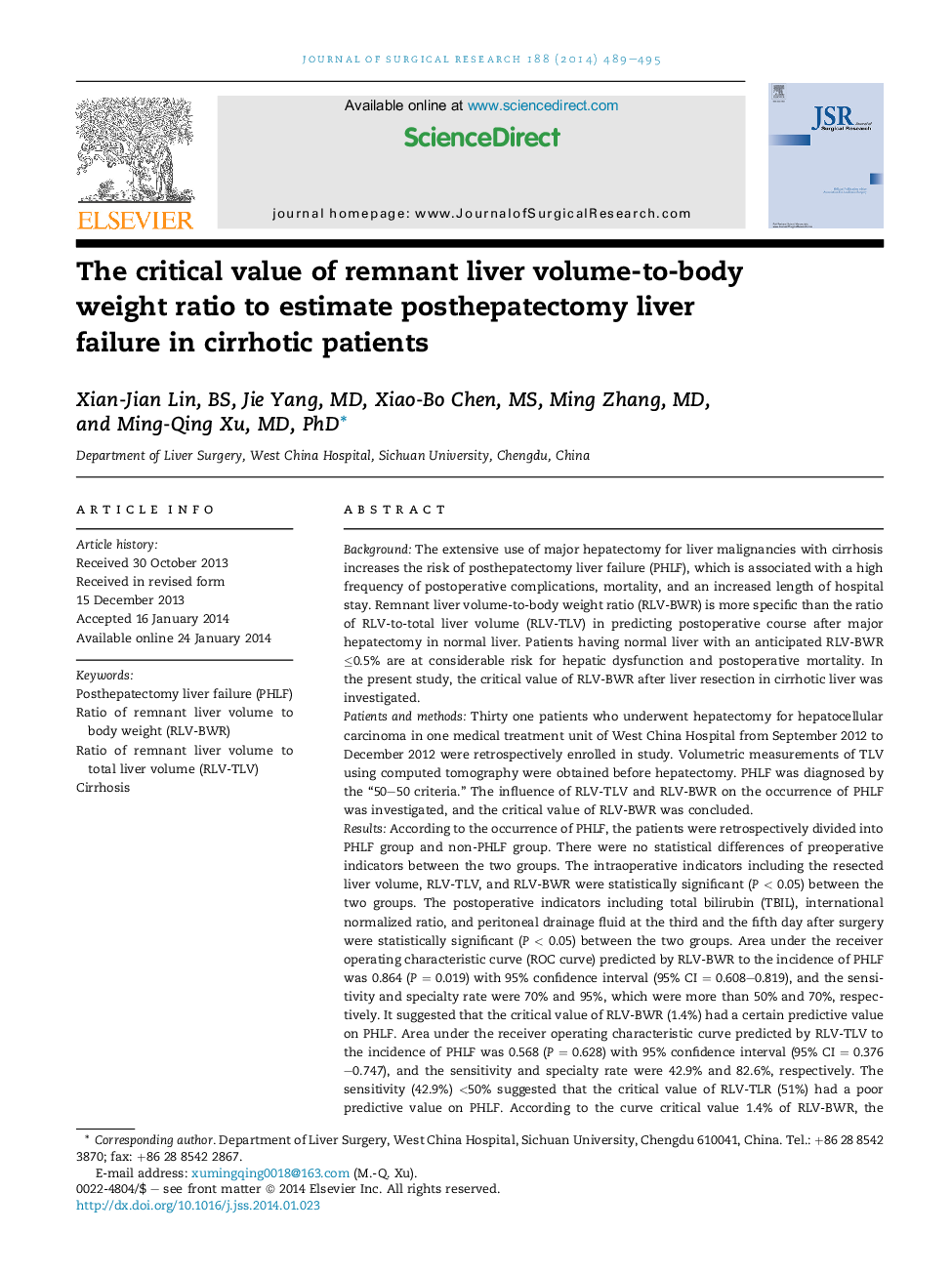| Article ID | Journal | Published Year | Pages | File Type |
|---|---|---|---|---|
| 6254048 | Journal of Surgical Research | 2014 | 7 Pages |
BackgroundThe extensive use of major hepatectomy for liver malignancies with cirrhosis increases the risk of posthepatectomy liver failure (PHLF), which is associated with a high frequency of postoperative complications, mortality, and an increased length of hospital stay. Remnant liver volume-to-body weight ratio (RLV-BWR) is more specific than the ratio of RLV-to-total liver volume (RLV-TLV) in predicting postoperative course after major hepatectomy in normal liver. Patients having normal liver with an anticipated RLV-BWR â¤0.5% are at considerable risk for hepatic dysfunction and postoperative mortality. In the present study, the critical value of RLV-BWR after liver resection in cirrhotic liver was investigated.Patients and methodsThirty one patients who underwent hepatectomy for hepatocellular carcinoma in one medical treatment unit of West China Hospital from September 2012 to December 2012 were retrospectively enrolled in study. Volumetric measurements of TLV using computed tomography were obtained before hepatectomy. PHLF was diagnosed by the “50-50 criteria.” The influence of RLV-TLV and RLV-BWR on the occurrence of PHLF was investigated, and the critical value of RLV-BWR was concluded.ResultsAccording to the occurrence of PHLF, the patients were retrospectively divided into PHLF group and non-PHLF group. There were no statistical differences of preoperative indicators between the two groups. The intraoperative indicators including the resected liver volume, RLV-TLV, and RLV-BWR were statistically significant (P < 0.05) between the two groups. The postoperative indicators including total bilirubin (TBIL), international normalized ratio, and peritoneal drainage fluid at the third and the fifth day after surgery were statistically significant (P < 0.05) between the two groups. Area under the receiver operating characteristic curve (ROC curve) predicted by RLV-BWR to the incidence of PHLF was 0.864 (P = 0.019) with 95% confidence interval (95% CI = 0.608-0.819), and the sensitivity and specialty rate were 70% and 95%, which were more than 50% and 70%, respectively. It suggested that the critical value of RLV-BWR (1.4%) had a certain predictive value on PHLF. Area under the receiver operating characteristic curve predicted by RLV-TLV to the incidence of PHLF was 0.568 (P = 0.628) with 95% confidence interval (95% CI = 0.376-0.747), and the sensitivity and specialty rate were 42.9% and 82.6%, respectively. The sensitivity (42.9%) <50% suggested that the critical value of RLV-TLR (51%) had a poor predictive value on PHLF. According to the curve critical value 1.4% of RLV-BWR, the patients were divided into RLV-BWR â¥1.4% group and RLV-BWR <1.4% group, and the incidence of PHLF between the two groups was statistically significant (P = 0.006).ConclusionsRLV-BWR was more specific than RLV-TLV in predicting PHLF after major hepatectomy of cirrhotic liver. Patients with an anticipated RLV-BWR <1.4% are at considerable risk for PHLF.
